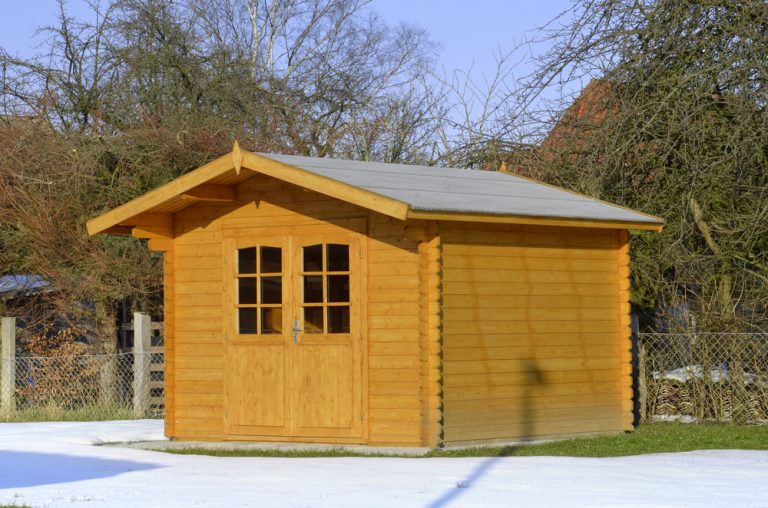Winter-Ready Gardens: How to Prepare Your Garden for Winter

As the days grow shorter and the air turns chilly, it’s time to prepare your garden for winter. Ensuring your outdoor oasis weathers the cold months well is vital for the health and beauty of your green space. In this article, we’ll share some tips and tricks to prepare your garden ready for winter.
Tips on how to prepare your garden for winter
1. Clean Up and Clear Out:
The first step to prepare your garden for winter is a thorough cleanup. Remove any fallen leaves, dead plants, and garden debris. This helps prevent pests and diseases from overwintering in your garden.
Pruning: Trim back dead or overgrown branches from shrubs and trees to encourage healthy growth in the spring. Be sure to prune at the right time, as some plants prefer to be pruned in late winter.
Perennials: Cut back your perennials to a few inches above the ground, but leave some foraging material for birds.
Annuals: Remove annual plants that have already completed their life cycle and compost them if possible.
Weeds: Pull any remaining weeds that could smother your garden during the winter months.
2. Protect Your Plants:
Shielding your plants from the harsh winter weather is essential to ensure their survival.
Mulch: Apply a layer of mulch around your garden beds to insulate the soil and regulate its temperature. This helps protect plant roots from frost.
Wrap Sensitive Plants: For delicate plants like rosebushes, use burlap or specialized plant covers to shield them from frost and cold winds.
Potted Plants: Move potted plants, like citrus trees or tender herbs, indoors to protect them from frost. Alternatively, group them in a sheltered location.
3. Keep Watering:
While it may seem counterintuitive, it’s crucial to continue watering your garden during the winter months.
Watering Schedule: As the temperatures drop, reduce the frequency of your watering, but increase the amount of water each time. Water the garden in the morning to allow the soil to dry during the day and reduce the risk of frost damage.
Hydrate Before Frost: Watering your plants before a frost can help protect them. Wet soil retains heat better than dry soil, reducing the chances of your plants freezing.
4. Prepare Your Lawn:
A lush, green lawn in the spring starts with the right winter care.
Aeration: Before the ground becomes too hard, aerate your lawn to allow air, water, and nutrients to reach the roots. This can be done using a garden fork or specialized aerator.
Fertilize: Apply a winterizing fertilizer to provide essential nutrients that your grass can store over the winter.
Mowing: Continue mowing your lawn as needed, but gradually lower the blade height. Leaving your grass too tall can create a haven for pests and diseases.
5. Clean and Store Garden Tools:

Don’t forget to prepare your garden tools for winter as well.
Clean and Sharpen: Clean your gardening tools and sharpen their blades. This not only keeps them in good working condition but also extends their lifespan.
Rust Prevention: Apply a light coat of oil to metal parts to prevent rusting during the winter months.
Storage: Store your tools in a dry place, away from the elements. If you have a garden shed or garage, consider hanging them on a wall or installing a pegboard for easy access.
6. Pest Control:
Winter can be a time of respite for many garden pests, but some are still active.
Inspect Plants: Check your garden for any signs of pest infestations. If you spot aphids or other pests, take measures to remove them.
Prune and Destroy: Prune away any infested or diseased plant material and dispose of it far from your garden.
Composting: Be cautious with what you add to your compost pile. Some garden pests can survive the winter in compost, so avoid adding affected plant material to your compost.
7. Plan for Spring:
Use the winter months as a time for planning and dreaming about your garden’s future.
Garden Journal: Maintain a garden journal where you can jot down ideas, note successes and challenges, and plan for the next growing season.
Seed Catalogs: Peruse seed catalogs and websites for inspiration. Order seeds well in advance to ensure you have the varieties you desire.
Garden Design: Consider any changes or additions you’d like to make to your garden’s design. This can be an excellent time to sketch out your ideas and create a planting plan.
8. Bird Feeding:
Feeding the birds during the winter not only benefits them but also adds life and color to your garden.
Bird Feeders: Set up bird feeders in your garden and keep them filled with seeds, nuts, and suet. This will attract a variety of birds and offer you a beautiful winter spectacle.
Water Source: Ensure birds have access to fresh water. A heated birdbath can be a great investment to keep water available even during freezing temperatures.

Protect your garden in winter with these tips
By following these tips to prepare your garden for winter, you’ll ensure that it remains a vibrant and healthy space even during the cold months. As you clean up and protect your plants, maintain your lawn, and plan for the next growing season, you’ll set the stage for a thriving garden when spring finally arrives.
As the days grow shorter and the air turns chilly, it’s time to prepare your garden for winter. Ensuring your outdoor oasis weathers the cold months well is vital for the health and beauty of your green space. In this article, we’ll share some tips and tricks to prepare your garden ready for winter.
Tips on how to prepare your garden for winter
1. Clean Up and Clear Out:
The first step to prepare your garden for winter is a thorough cleanup. Remove any fallen leaves, dead plants, and garden debris. This helps prevent pests and diseases from overwintering in your garden.
Pruning: Trim back dead or overgrown branches from shrubs and trees to encourage healthy growth in the spring. Be sure to prune at the right time, as some plants prefer to be pruned in late winter.
Perennials: Cut back your perennials to a few inches above the ground, but leave some foraging material for birds.
Annuals: Remove annual plants that have already completed their life cycle and compost them if possible.
Weeds: Pull any remaining weeds that could smother your garden during the winter months.
2. Protect Your Plants:
Shielding your plants from the harsh winter weather is essential to ensure their survival.
Mulch: Apply a layer of mulch around your garden beds to insulate the soil and regulate its temperature. This helps protect plant roots from frost.
Wrap Sensitive Plants: For delicate plants like rosebushes, use burlap or specialized plant covers to shield them from frost and cold winds.
Potted Plants: Move potted plants, like citrus trees or tender herbs, indoors to protect them from frost. Alternatively, group them in a sheltered location.
3. Keep Watering:
While it may seem counterintuitive, it’s crucial to continue watering your garden during the winter months.
Watering Schedule: As the temperatures drop, reduce the frequency of your watering, but increase the amount of water each time. Water the garden in the morning to allow the soil to dry during the day and reduce the risk of frost damage.
Hydrate Before Frost: Watering your plants before a frost can help protect them. Wet soil retains heat better than dry soil, reducing the chances of your plants freezing.
4. Prepare Your Lawn:
A lush, green lawn in the spring starts with the right winter care.
Aeration: Before the ground becomes too hard, aerate your lawn to allow air, water, and nutrients to reach the roots. This can be done using a garden fork or specialized aerator.
Fertilize: Apply a winterizing fertilizer to provide essential nutrients that your grass can store over the winter.
Mowing: Continue mowing your lawn as needed, but gradually lower the blade height. Leaving your grass too tall can create a haven for pests and diseases.
5. Clean and Store Garden Tools:

Don’t forget to prepare your garden tools for winter as well.
Clean and Sharpen: Clean your gardening tools and sharpen their blades. This not only keeps them in good working condition but also extends their lifespan.
Rust Prevention: Apply a light coat of oil to metal parts to prevent rusting during the winter months.
Storage: Store your tools in a dry place, away from the elements. If you have a garden shed or garage, consider hanging them on a wall or installing a pegboard for easy access.
6. Pest Control:
Winter can be a time of respite for many garden pests, but some are still active.
Inspect Plants: Check your garden for any signs of pest infestations. If you spot aphids or other pests, take measures to remove them.
Prune and Destroy: Prune away any infested or diseased plant material and dispose of it far from your garden.
Composting: Be cautious with what you add to your compost pile. Some garden pests can survive the winter in compost, so avoid adding affected plant material to your compost.
7. Plan for Spring:
Use the winter months as a time for planning and dreaming about your garden’s future.
Garden Journal: Maintain a garden journal where you can jot down ideas, note successes and challenges, and plan for the next growing season.
Seed Catalogs: Peruse seed catalogs and websites for inspiration. Order seeds well in advance to ensure you have the varieties you desire.
Garden Design: Consider any changes or additions you’d like to make to your garden’s design. This can be an excellent time to sketch out your ideas and create a planting plan.
8. Bird Feeding:
Feeding the birds during the winter not only benefits them but also adds life and color to your garden.
Bird Feeders: Set up bird feeders in your garden and keep them filled with seeds, nuts, and suet. This will attract a variety of birds and offer you a beautiful winter spectacle.
Water Source: Ensure birds have access to fresh water. A heated birdbath can be a great investment to keep water available even during freezing temperatures.

Protect your garden in winter with these tips
By following these tips to prepare your garden for winter, you’ll ensure that it remains a vibrant and healthy space even during the cold months. As you clean up and protect your plants, maintain your lawn, and plan for the next growing season, you’ll set the stage for a thriving garden when spring finally arrives.







